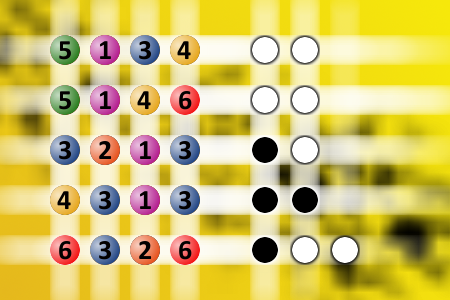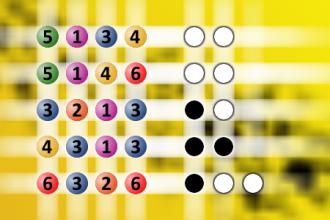Find the right combination
The computer chose a secret code (sequence of 4 digits from 1 to 6). Your goal is to find that code. Black circles indicate the number of hits on the right spot. White circles indicate the number of hits on the wrong spot.
Drinking buddies
A couple of drinking buddies who are airplane mechanics are in a hangar at JFK New York. It's fogged in and they have nothing to do.
One of them says to the other, "Man, have you got anything to drink?"
The other one says, "Nah, but I hear you can drink jet fuel, and it will kinda give you a buzz."
So they do drink it, get smashed and have a great time, like only drinking buddies can.
The following morning, one of the men wakes up and he just knows his head will explode if he gets up, but it doesn't. He gets up and feels good. In fact, he feels great! No hangover!
The phone rings. It's his buddy. The buddy says, "Hey, how do you feel?"
"Great", he said! "Just great"! The buddy says, "Yeah, I feel great too, and no hangover. That jet fuel stuff is great. We should do this more often!
"Yeah, we could, but there's just one thing . . . "
"What's that?"
"Did you fart yet?"
"No . . . "
"Well, DON'T, 'cause I'm in Phoenix."

